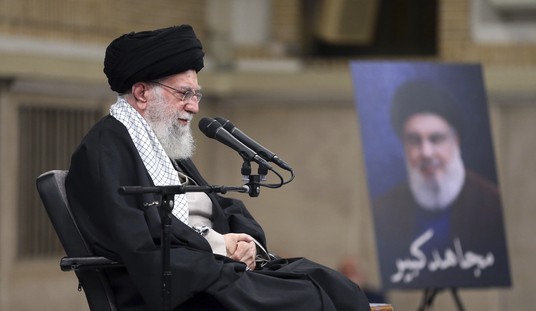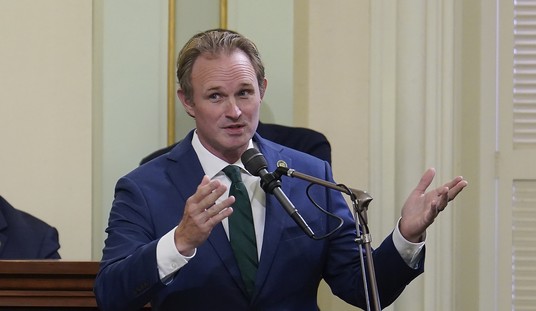My RedState colleague and good friend Victoria Coates recently wrote a post calling for a humanitarian intervention in Syria on behalf of the opposition and civilians who are being killed daily by Bashar al-Assad’s regime. She writes:
“In dealing with Libya and Syria, consistency need not be the hobgoblin of little minds but can rather be the hallmark of a consistent and coordinated foreign policy. There are equivalencies to be drawn between the two crises, and once these are recognized we should take equivalent action. It is not a decision to be taken lightly, but we would not be alone and the cause is just. We have the unified support of our European and Arab allies. We have moral and strategic interests at stake. Rather than whining about the shocking moral turpitude of the United Nations, the President of the United States needs to remember his responsibilities as the leader of the free world–and lead.”
While I have the utmost respect for Dr. Coates, I am hesitant to agree with her in this case. There is no question that the bloodshed in Syria, which Secretary of State Hillary Clinton referred to a mere nine months ago as a simple “police action” and contrasted favorably to the violent crackdown in Libya, has been both constant and staggering (in that same interview, Clinton favorably contrasted Assad to Qaddafi, saying “many of the members of Congress of both parties who have gone to Syria in recent months have said they believe he’s a reformer”). The death toll in Homs alone has reportedly grown to 3,500 over the last eleven months, and while the Arab League has repeatedly called for an end to Assad’s crackdown, opposition from Russia and China has left the UN Security Council unable to pass even a simple resolution condemning the government’s murderous actions.
As the bodycount continues to rise in Syria, there has been an increase in calls for intervention conducted outside the auspices of the UN. However, while these calls are understandable on humanitarian grounds, their authors almost invariably neglect to include any details on just what it is they wish to see take place with regard to that intervention.
At Abu Muqawama, Andrew Exum sums up the problem nicely:
“The problem is, for me at least, ‘military intervention’ at once means everything and nothing. On the one hand, the decision to use force to achieve a desired political end is momentous in and of itself. On the other hand, though, I cannot determine whether or not “military intervention” is a good or bad idea until I have some idea of what, precisely, is meant by the term. Analysts who argue either for or against military intervention have an obligation to sketch out the ways in which one could possibly intervene so that we can determine which ways, if any, make sense given the circumstances.”
This is the real question: what would an intervention in Syria look like, and under whose auspices would it be carried out? In Libya, the most frequently cited example, the UN-approved intervention succeeded in its ultimate goal of preventing Qaddafi from crushing the rebels. It also succeeded in removing him from power, despite that not being part of the UN authorization (and despite the effort taking far longer than the “days, not weeks” that President Obama promised).
Two points on Libya are particularly worth noting. First, despite people declaring victory and then tuning out as usual upon Qaddafi’s capture (including, it appears, several of those ‘experts’ who called for intervention in Libya and who are calling for it again in Syria), the situation on the ground is poor and growing worse by the day. As Anthony Shadid noted in the New York Times Wednesday:
The country that witnessed the Arab world’s most sweeping revolution is foundering. So is its capital, where a semblance of normality has returned after the chaotic days of the fall of Tripoli last August. But no one would consider a city ordinary where militiamen tortured to death an urbane former diplomat two weeks ago, where hundreds of refugees deemed loyal to Col. Muammar el-Qaddafi waited hopelessly in a camp and where a government official acknowledged that “freedom is a problem.” Much about the scene on Wednesday was lamentable, perhaps because the discord was so commonplace.
[…]
The force at the Tripoli airport is the powerful militia from Zintan, a mountain town south of the capital, which played a role in Tripoli’s fall and still holds prisoner Colonel Qaddafi’s most prominent son, Seif al-Islam. By its count, it has 1,000 men at the airport, and one of its commanders there…The militias are proving to be the scourge of the revolution’s aftermath. Though they have dismantled most of their checkpoints in the capital, they remain a force, here and elsewhere. A Human Rights Watch researcher estimated there are 250 separate militias in the coastal city of Misurata, the scene of perhaps the fiercest battle of the revolution. In recent months those militias have become the most loathed in the country.
Second, the “no-fly zone” enforced over Libya was, in actuality, no such thing; as anybody who was paying attention at the time will recall, air power and other standoff weaponry were employed not just to ensure that the skies over Libya stayed clear, but to take out Qaddafi’s armor, vehicles, and troops between Tripoli and Benghazi. As Exum notes in another post:
The balance in Libya was only tipped when NATO warplanes began “enforcing the no-fly zone” by destroying Libyan tanks and armored personnel carriers. (I know those things don’t actually fly, but the only way you can be really sure they won’t grow wings is by dropping a GBU-31 on top of them.)
Of course, the reality – that massive mission creep was necessary to break the gridlock in Libya and push Qaddafi out of power – is frequently obfuscated or ignored when discussing the Libyan “success.” Writing in the Times a few weeks ago, Robert Pape used Libya and Syria as examples of the need for a “new standard for humanitarian intervention” (which he didn’t go into detail on), while arguing that such intervention is incumbent on America et al if people are being killed as long as there is no danger to the interveners. Along with proposing a “new standard” for intervention without actually going into what that standard should be, Pape misrepresents NATO’s Libya action (which he supports) while contrasting it with a prospective intervention in Syria (which he currently opposes, basically because it would be more difficult and more dangerous). He writes:
“[R]ather than seeking regime change to prevent genocide, President Obama focused on the narrower objective of preventing “a humanitarian catastrophe” and explicitly ruled out foreign-imposed regime change.
These more modest, pragmatic goals sidestepped Mr. Gates’s objections and reflect the emerging new standard for humanitarian intervention. The United States took the lead, but initially only to halt the mass-homicide campaign. And it rightly set goals that would not require an ambitious military commitment.”
Of course, as alluded to above, anybody who was paying attention at the time knows that the disavowal of regime decapitation and change was little more than lip service to the UN resolution that specifically authorized the protection of civilians rather than the overthrow of Qaddafi, in part because it was widely recognized that the protection of civilians from Qaddafi could only be ensured via his removal.
Libya is not Syria – and the ‘Pottery Barn Rule’ is being thoroughly ignored by those who are now focused on the latter, having abandoned the former to militias and growing chaos. However, the intervention there has impacted the willingness of America, NATO, and the United Nations to approve and participate in a similar intervention in Syria (in an interesting if incomplete piece, Joshua Foust suggeststhat Russia and China are opposing Syrian intervention specifically because of the NATO action in Libya and the severe mission creep it entailed).
More importantly, though, Syria has a functional military with significant firepower and a government that is still largely in control throughout the country. It has a powerful ally in Russia, which continues to give aid and comfort to Assad’s regime as the violent crackdown continues (and which will continue to do so as long as they consider it to be in their interest to do so, which I think may be a more significant period of time than P.J. Crowley predicts). Further, Syria currently has no Benghazi: rebels haven’t gained control of any geographic area significant enough to use as a refuge or base from which to conduct defensive operations, and potential targets for interventionist air power are interspersed with civilians and rebels, which greatly limits the effectiveness of standoff weaponry while simultaneously increasing the risk of collateral damage by orders of magnitude. In his New York Times column referenced above, Pape writes:
“Unlike Libya, where much of the coastal core of the population lived under rebel control, the opposition to Syria’s dictatorial president, Bashar al-Assad, has not achieved sustained control of any major population area. So air power alone would probably not be sufficient to blunt the Assad loyalists entrenched in cities, and a heavy ground campaign would probably face stiff and bloody resistance.”
If arming the rebels is a serious consideration, it is important to consider just how that would be carried out, who would be armed, what the response would be (on both sides), and what difference it would make in the overall battle. If employing air power and standoff weaponry is being proposed, then targeting, ordnance control, and the avoidance of collateral damage – as well as the effectiveness of that course of action – must be taken into consideration. If “boots on the ground” is a realistic option to those calling for intervention – well, a whole host of further issues must be addressed, including the risk of a proxy war with Russia that brings along its own risk (however small it might be) of further international escalation.
All of this is not to declare outright that a Syrian intervention to be outside the realm of propriety or possibility. However, it is incumbent on those who are calling, to use Foust’s term, for America and NATO to become a sort of “Team America for R2P” to address these and other issues that such action faces, and to present coherent and specific plans for the intervention they are proposing. Additionally, given the current situation in Libya mere months after the conclusion of NATO action there, it is important that conditions in Syria both during and after the proposed intervention, and over the longue duree following the conclusion of offensive operations, be both considered and adequately planned for.
Until then, it is probably best for all involved if the talk of a Syria intervention remains just that, despite the terrible human cost of Assad’s actions.














Join the conversation as a VIP Member